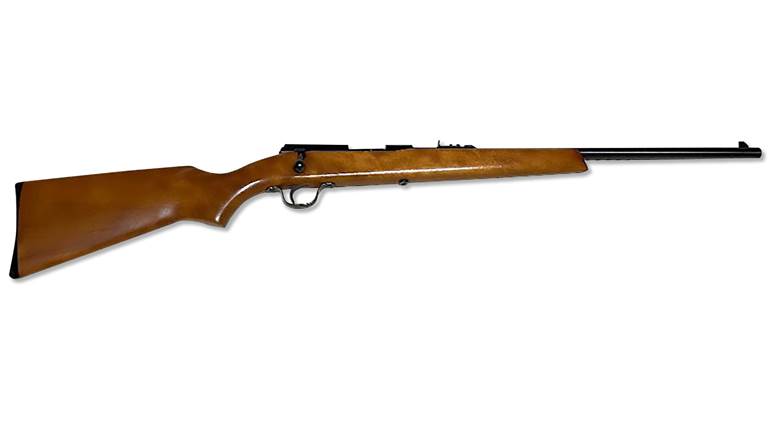
This article, "Civilize 'Em With A Krag," appeared originally in the July 2004 issue of American Rifleman. To subscribe to the magazine, visit the NRA membership page here and select American Rifleman as your member magazine.
The Spanish-American War of 1898 was America’s last war of the 19th century and began the ascent of the United States toward world power. It also marked the first major combat use of the U.S. Army’s new .30-40 Krag-Jorgensen service rifle. Adopted in 1892, and placed into production at the venerable Springfield Armory in 1894, the Norwegian-designed Krag-Jorgensen was intended to replace the ponderous and obsolete single-shot, blackpowder .45-70 Gov’t Trapdoor Springfield.

The Krag was chambered for the first small-caliber (.30), smokeless-powder cartridge in U.S. military service, the .30-40. The rifle featured an extremely smooth bolt-action and a rather unusual five-round magazine on the right side of the receiver. A knife bayonet, the Model 1892, was adopted for the new rifle and represented a notable departure from the triangular blade socket bayonets previously used. The Krag was manufactured in rifle versions for the infantry and carbine versions for the cavalry. There were eventually three rifle variants (the Model 1892, Model 1896 and Model 1898) and three carbine variants (the Model 1896, Model 1898 and Model 1899) of the U.S. Krag.

Even though the Krag was the standard U.S. service rifle in 1898 at the outbreak of the Spanish-American War, there were only some 30,000 available. This was barely sufficient to equip the U.S. Army regular infantry units. In order to meet the manpower requirements of the war, the small regular army was augmented by many volunteer units.

There were not enough Krags in inventory to equip these rapidly mobilized outfits, and most were armed with old .45-70 Trapdoors. The most famous volunteer outfit of the war was the 1st United States Volunteer Cavalry, better known as the “Rough Riders.” Due in large measure to the efforts of the unit’s second-in-command, Theodore Roosevelt, the Rough Riders were equipped with the latest Model 1896 Krag carbine, but the unit did not receive them until a few days before departing for Cuba.

Most Krag rifles available to regular infantry units were Model 1892s. A relatively small number of Model 1896 Krag rifles were also on hand, but the majority of Spanish-American War combat photos taken in Cuba depict only unaltered Model 1892 rifles. None of the Model 1898 rifles, or carbines, were manufactured in time for duty in the war. The U.S. Marine Corps, which participated in combat operations in Cuba and the Philippines, was primarily armed with the Winchester Model 1895 6 mm Lee Navy straight-pull rifle.

The United States was ill-prepared for the war, and our troops in Cuba were faced with shortages of all types of supplies and equipment, including basic rifle cleaning implements. Some soldiers are reported to have cut off part of their shirt tails for use as improvised cleaning patches.

The climactic problems encountered in Cuba paled in comparison with those faced by our troops in the Philippines where they fought the Spanish occupiers of the islands after Admiral Dewey’s defeat of the enemy fleet in Manila Bay. Perhaps surprisingly, the supply issue was not as critical in the Philippines as it was in Cuba, but the harsher conditions made care and maintenance of the Krags equally difficult. It is reported that: “The bright blue and case-hardened (Krag) rifle steel gradually changed to brown mahogany color in spite of a plentiful supply of gun oil.”

The Krag was initially popular with most of its users due to its flawlessly smooth bolt action and overall reliability. The design, however, was found to be lacking when compared to the Model 1893 Mauser utilized by the Spanish. Unlike the Krag, the Mauser could be rapidly loaded by means of a five-round charger (stripper clip) and its double locking lug bolt enabled the use of a cartridge with greater power than the .30-40.

Fortunately, due to the short duration of combat in Cuba, American troops did not have to pay an inordinately high price for the Krag’s deficiencies as compared to the relative superiority of the Mauser. The problems encountered with the Krag resulted in the search for a new service rifle that incorporated many of the desirable features of the Mauser. This search culminated in the adoption of the famed Model of 1903 Springfield just five years after the conclusion of the Spanish-American War.

Although the fighting was over in Cuba in just a matter of a few weeks, the situation was totally different in the Philippines. Even though the Spanish Army in the Philippines surrendered on August 13, 1898—less than a month after hostilities had ceased in Cuba—the Americans essentially traded one enemy for another. Although many Filipinos were relieved to be rid of their oppressive Spanish occupiers, there was a strong nationalist movement in the Philippines that demanded total independence.

But the United States was not prepared to grant independence at that time. On January 4, 1899, a proclamation was issued that the American government had obtained possession of the Philippines during the war and intended to extend its control to all the islands in the archipelago. This policy caused immediate outrage among some in the United States. An article in the November 1898 issue of Harper’s Weekly stated, in part: “[A] war that has discovered the unworthiness of its cause … and gross mismanagement of which has filled thousands of graves with victims … demonstrates nothing more clearly than our unpreparedness for it … and has launched us on a career of empire.”
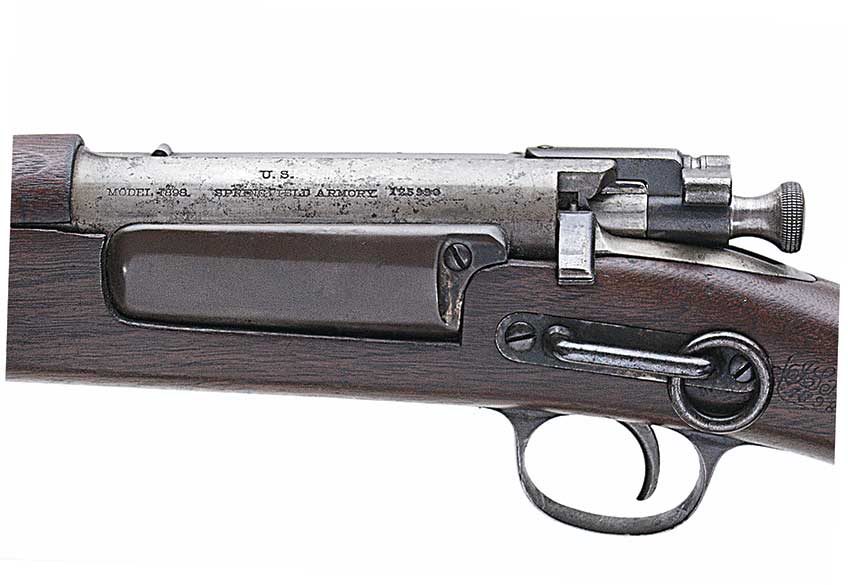
While the American occupation of the Philippines was unpopular with a segment of the domestic population, it was met with fury by many nationalist Filipinos. Among the most virulent opponents of the new American occupiers were the Moslem Moros (Spanish for Moslem) tribesmen, also known as Juarmentados, who had ferociously battled for decades the Spanish troops garrisoning the Philippines.

As soon as the U.S. Army replaced the Spaniards, our troops met the full fury of the Moros, who wreaked much havoc with their razor-sharp bolos, barongs and krises. The insurgents also attempted to capture as many modern military rifles from their adversaries as possible. As related by Col. Philip Shockley in his interesting historical monograph, The Krag-Jorgensen Rifle in the Service: “The insurgent government offered rewards for captured Krags which the Filipino esteemed as much as he did a Mauser.”

During the Philippine Insurrection, a number of Model 1898 Krag rifles saw action, but many of the earlier Model 1892 and Model 1896 variants remained in use as well. The standard M1892 Krag bayonet saw widespread use, but some experimental Krag Bolo and Bowie bayonets were fabricated and field-tested in the Philippines during this era. None of these experimental bayonets were standardized or issued in any appreciable numbers.
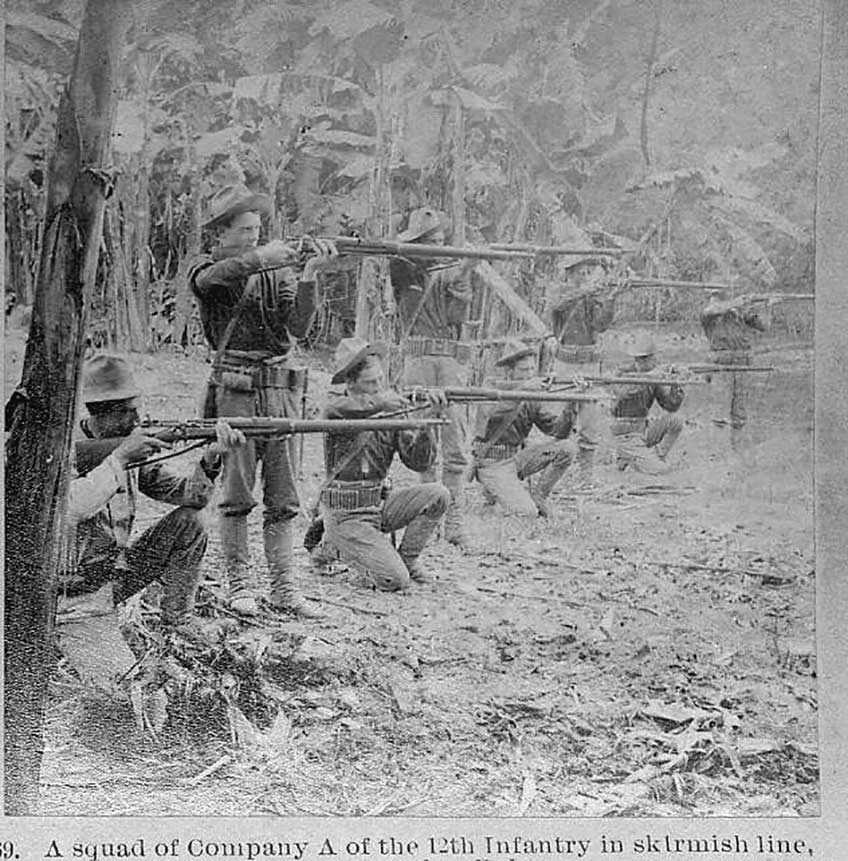
The U.S. Army troops garrisoning the Philippines were well aware of the animosity felt by the nationalist Filipino insurgents. Krags were always kept fully loaded during guard duty and many bayonets were honed to a razor-edge. Suspicious activity by unknown Filipinos lurking around army posts was often met by rifle fire. An oft-repeated saying among American troops during this period was “ … Krag ’em and bag ’em.”
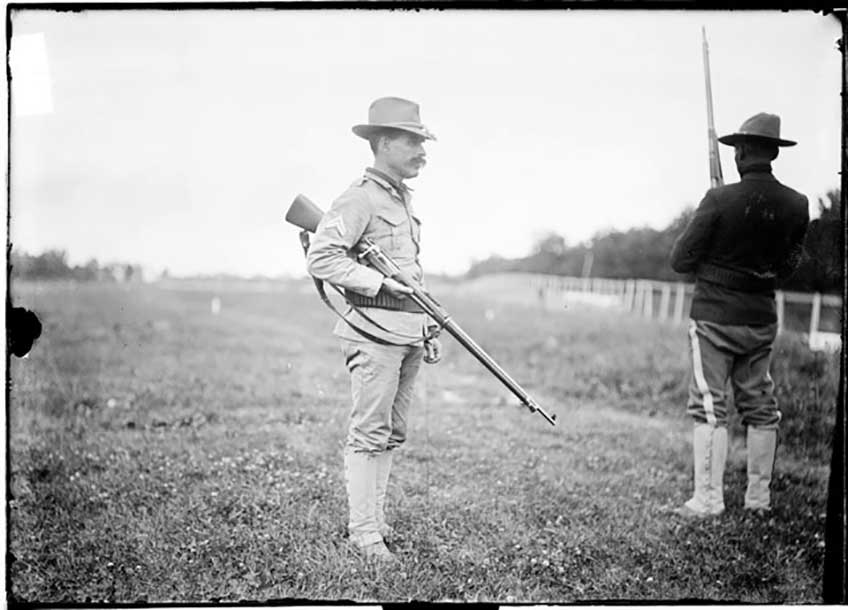
There were numerous small-scale, but very bloody, engagements between American soldiers and the insurgents, especially the fierce Moros. Like present-day Islamic extremists, the Moros believed they would be granted carnal rewards in the afterlife if they shed the blood of infidels on Earth.
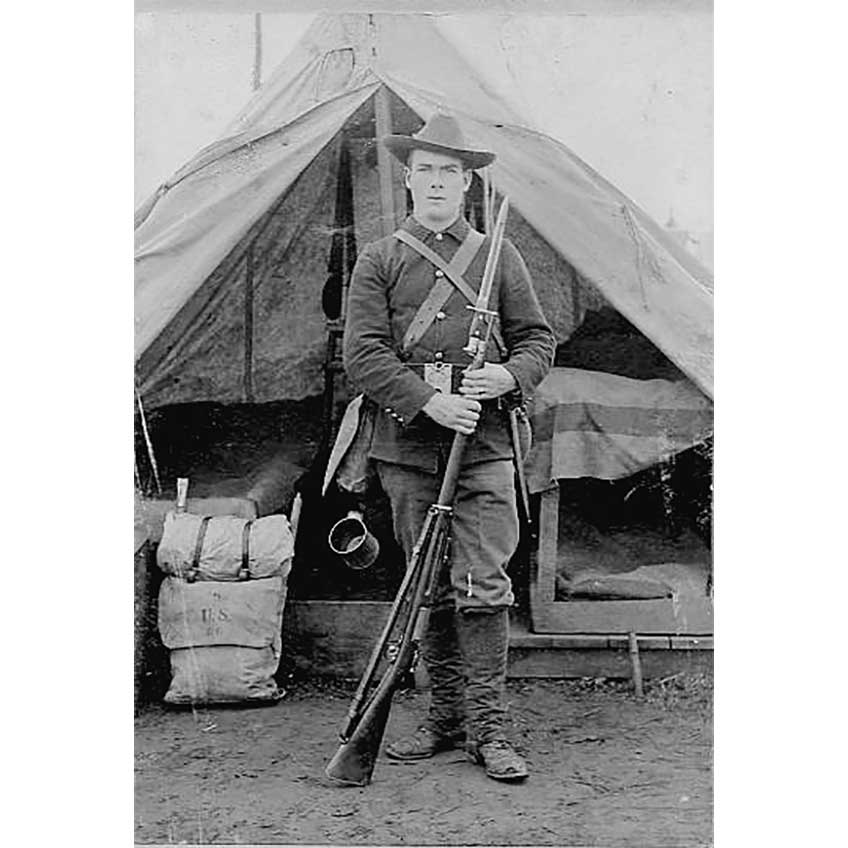
Some Moros reportedly bound their limbs with cords to inhibit blood loss if wounded and worked themselves into a religious frenzy before “going Juarmentado.” There were many instances where mortally wounded Moros hacked American soldiers to death before themselves dying. As correctly stated by Shockley: “A crazed Moro, imbued with the spirit of killing, just couldn’t be stopped by a leg or chest shot from a Krag.”

Our troops sought ways to increase the Krag’s stopping power including filing the tip of the bullet to create “dum-dum” ammunition (as it was termed at the time) or pulling out the bullet and reinserting it with the flat base forward. These modifications were, at best, only marginally helpful. A gruesomely illustrative example was related by Col. Shockley:
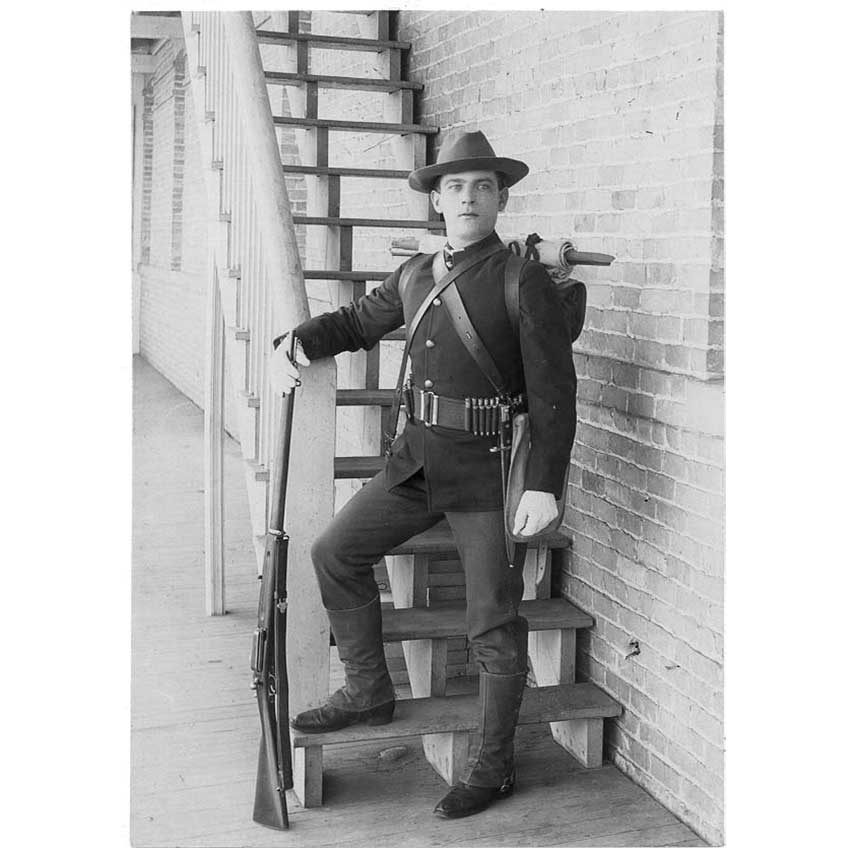
“During the American occupation a corporal and two privates were on guard … .Three Juarmentados (Moros), disguised as hucksters, approached the three guards. Suddenly throwing their bundles to the ground, each with raised kris, which had been sharpened and polished for the occasion, dashed toward the alert guards. Three Krag rifles with bayonets affixed, came up, and three shots shattered the stillness. The first Moro, hit in the face, dived into the coral sand. He had been shot between the eyes and the bullet tore out the back of his head. The second Moro, hit in the mid-section, doubled-up, and then sat down, but the third, shot through the chest, continues his rush. The corporal thrust with his bayonet, and the Moro Moslem frenzy forced his body to receive the whole of it, clear to the muzzle. The downward swing of the kris split the corporal’s skull to the teeth. The cartridges had been dum-dum.”
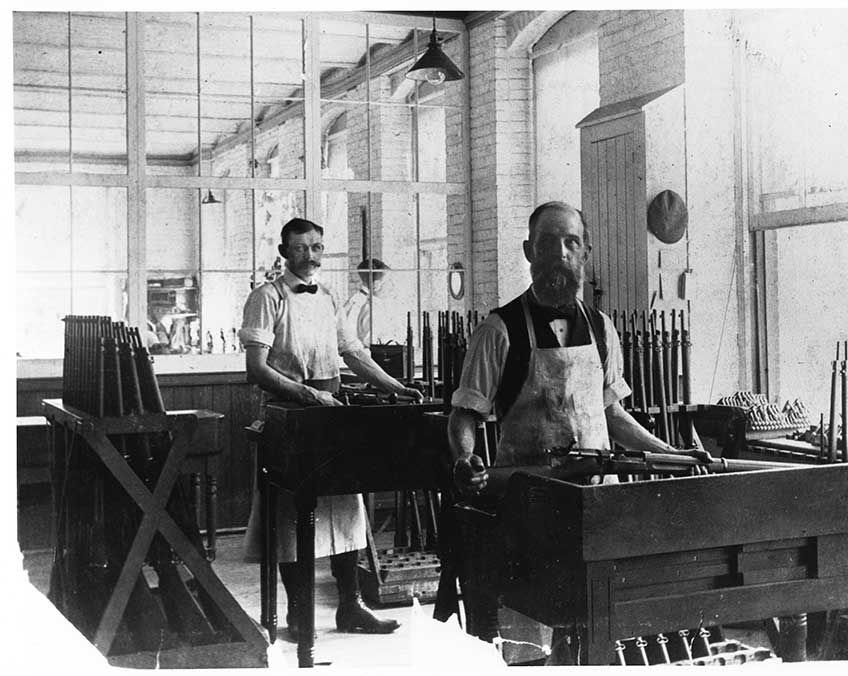
In order to arm our troops with more effective firearms for such fierce close-quarter combat, obsolescent M1873 .45 Colt Single Action Army revolvers were taken out of retirement and issued in order to have handguns with more power than the anemic, standard-issue Colt .38 Long Colt military revolvers. The U.S. Army also procured and issued a quantity (estimated at 200) Winchester Model 1897 short-barreled 12-ga. shotguns (riot guns) loaded with 00 buckshot. These proved to be formidable close-quarter combat arms.
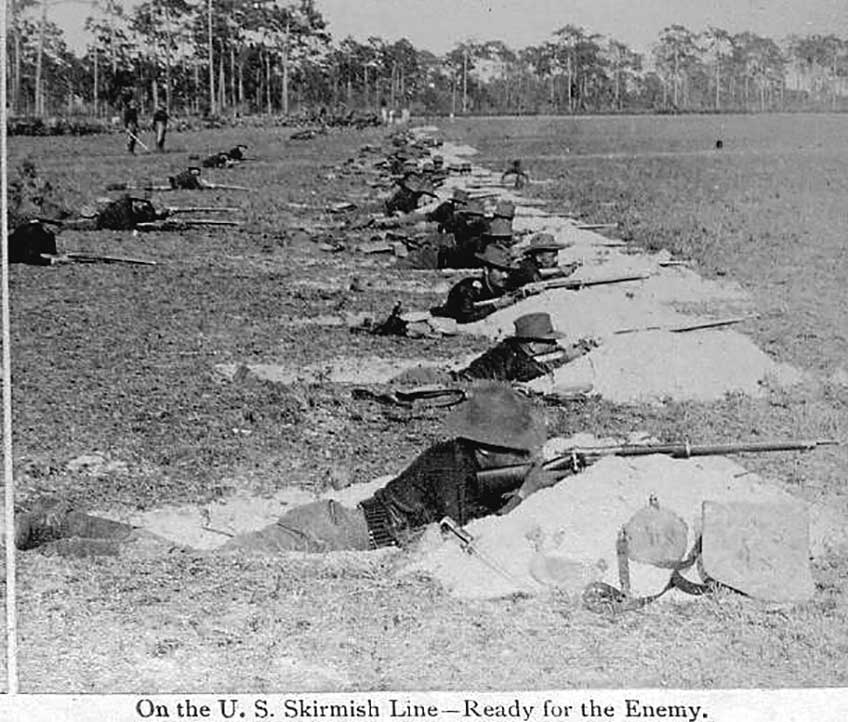
The American government organized and equipped the Philippine Constabulary and gradually turned the problem of putting down the insurrectionists over to our Filipino allies. Interestingly, some Moros served with distinction in the Constabulary as well. The Constabulary, trained and led by American military officers, was initially armed with .45-70 Trapdoor carbines since the smaller statured Filipinos were not comfortable with full-length rifles.
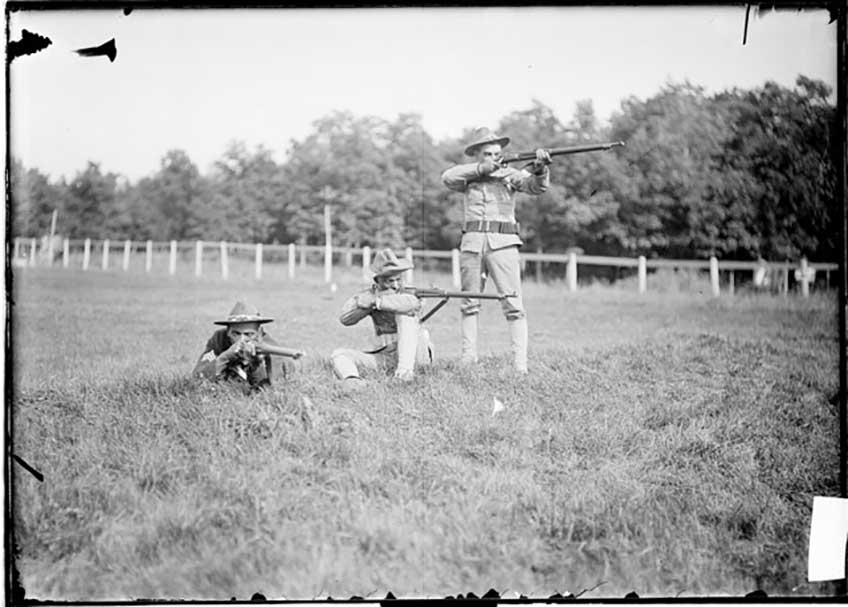
After the turn of the century, a number of M1899 Krag carbines, along with a few M1898 carbines, were altered for Constabulary use by the fitting them with cut-down M1898 Krag rifle stocks equipped with sling swivels and bayonet lugs. The ends of the larger diameter carbine barrels were lathe-turned down in order to permit the use of the standard bayonet. These modified Krag carbines resembled miniature rifles and are typically known today as Philippine Constabulary Rifles. After circa 1914, the task of pacifying the Philippines was almost solely carried out by the Philippine Constabulary, and U.S. Army combat operations in the archipelago were largely a thing of the past.
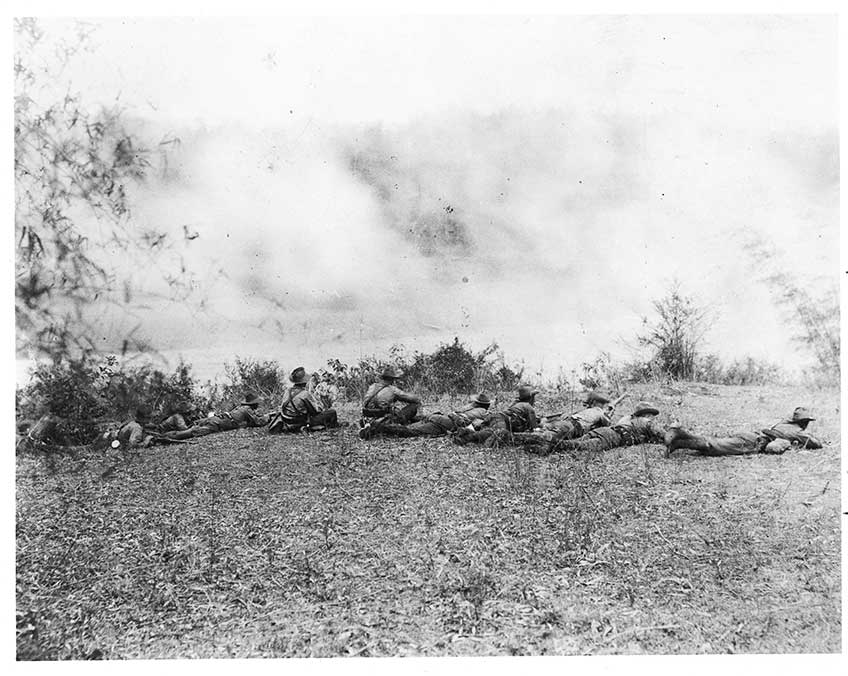
Combat use of the American Krag around the turn of the century was not restricted to the Philippines. Unrest in China during this period led the rise of the Boxers who saw foreign devils as the reason for that nation’s ills. The Boxers embarked on a rampage of murder against foreigners in China, and a number of nations sent military contingents to the mainland in order to protect their respective citizens.
One of the most famous incidents was the siege at the International Legation at Peking in 1900 where a number of foreigners, including some Americans, were trapped behind the legation walls by Boxers intent on massacring everyone inside. Foremost among the defenders of the legation was a contingent of U.S. Marines armed with Lee Navy rifles. In order to raise the siege, several nations dispatched troops and the legation was eventually rescued.
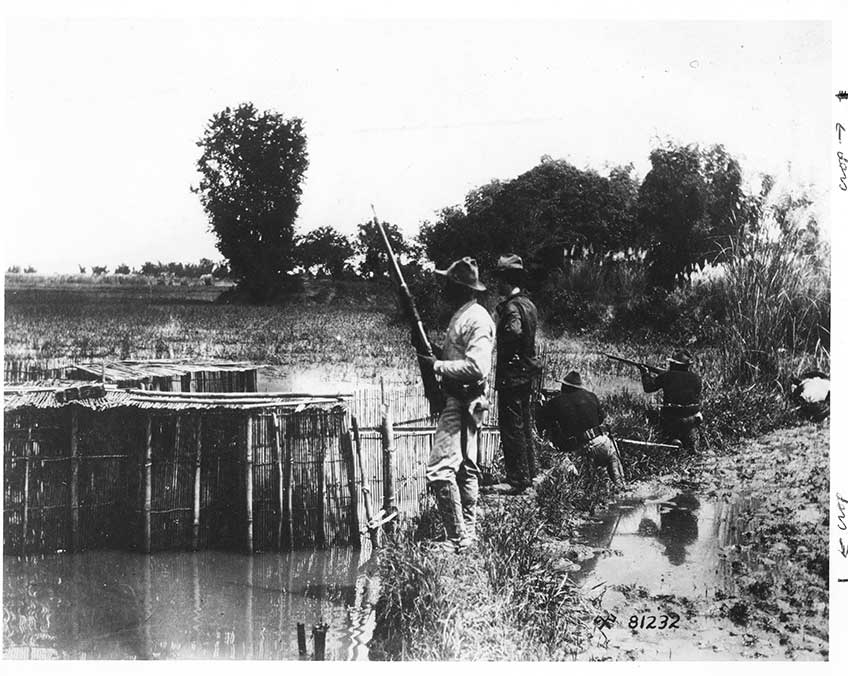
American units that participated in the international relief column included the U.S. Army’s 9th and 14th Infantry Regiments and a contingent of U.S. Marines, all armed with Krag rifles. The Boxer Rebellion marked the end of the M1895 Lee Navy’s tenure as a first-line U.S. military arm as it was replaced in U.S. Navy and U.S. Marine Corps service during this period by the Krag.
The Krag remained the standard U.S. military service rifle until the introduction of the “U.S. Rifle, Caliber .30, Model of 1903,” which was designed to replace both the Krag rifle and carbine. Even after adoption of the ’03, Krags remained in service until the end of the first decade of the 20th century, by which time it was fully replaced in front-line service by the new Springfield.

A number of Krag rifles lingered on in the military’s arsenal and some saw supplemental service well into the First World War. For all intents and purposes, however, the Spanish-American War and the subsequent Philippine Insurrection, along with the short interlude of the Boxer Rebellion relief expedition, marked the Krag’s glory days.
The Krag’s tenure of service was very brief as compared to some other U.S. military rifles, such as the M1903 Springfield and M1 Garand. Nevertheless, the Krag was our nation’s standard service rifle at the time of the United States’ transformation into an international power and the period of American overseas expansionism. As aptly stated by Col. Shockley: “The Krag is today—as it was in all its yesterdays—a grand weapon. No American military arm was ever employed in more diversified purposes in so short a span of years.”
The feelings of many American soldiers during the Krag’s short-lived, but tumultuous, period of service were summed up in the concluding words of a popular Army song of the day: “Underneath the starry flag, Civilize ’em with a Krag, And return us to our own beloved homes!”













